Snowshoeing in the Arctic and Antarctica
Exploring a new place on foot is one of the best ways to truly experience it. With this in mind, Oceanwide Expeditions offers a variety of snowshoeing expeditions from the Polar shorelines, designed for everyone—from casual explorers to avid snowshoe enthusiasts.
Do I Need Experience? How Physically Fit Should I Be?
For the basic walks, you just need to be in reasonably good shape and health. The snowshoeing activities typically last between 2 to 6 hours. Keep in mind there are no paths, and you'll be traversing rugged terrain and some hills.
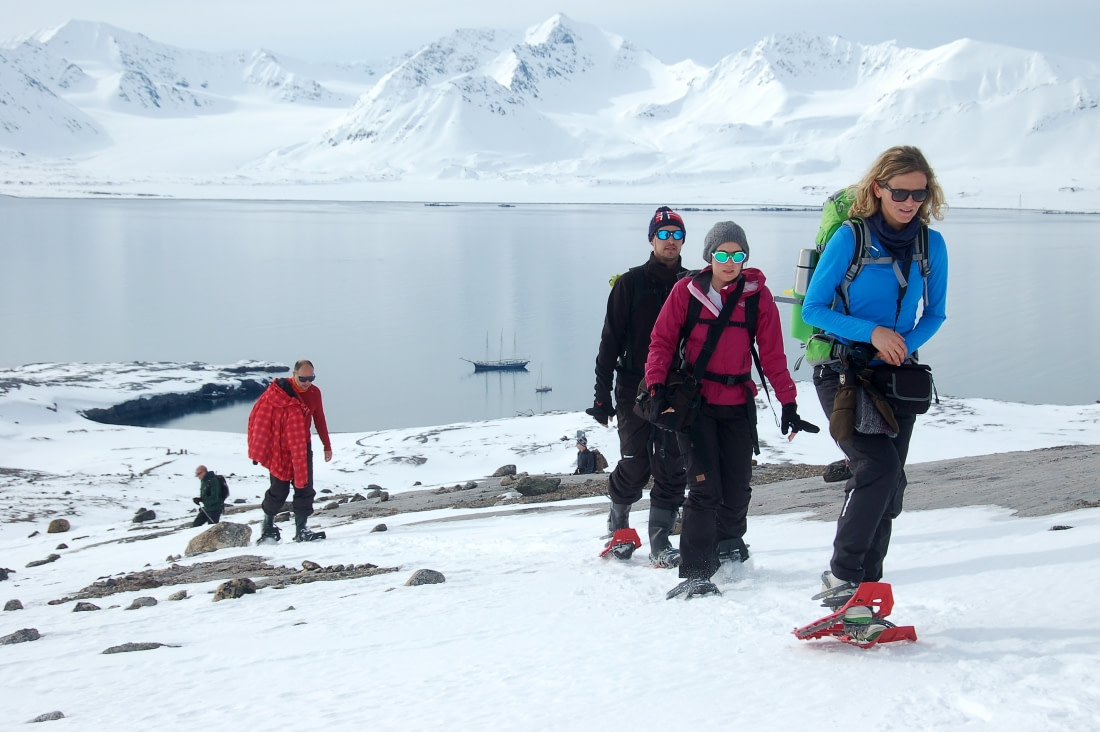
Usually, 1 to 3 different types of walks are offered per landing, ranging from a casual stroll to a challenging hike. In Antarctica, the longest hike takes about 2 hours, while in the Arctic, the longest hike can last a full day (we provide a packed lunch).
We reserve the right to suggest an alternative activity if a passenger seems unable to enjoy a particular hike. This is for the enjoyment of other passengers and safety reasons—if a health incident occurs, only basic first aid is available.
Our experienced guides will recommend a hike based on your fitness level. If you have any questions about your health or skills, please contact us. We're happy to help.
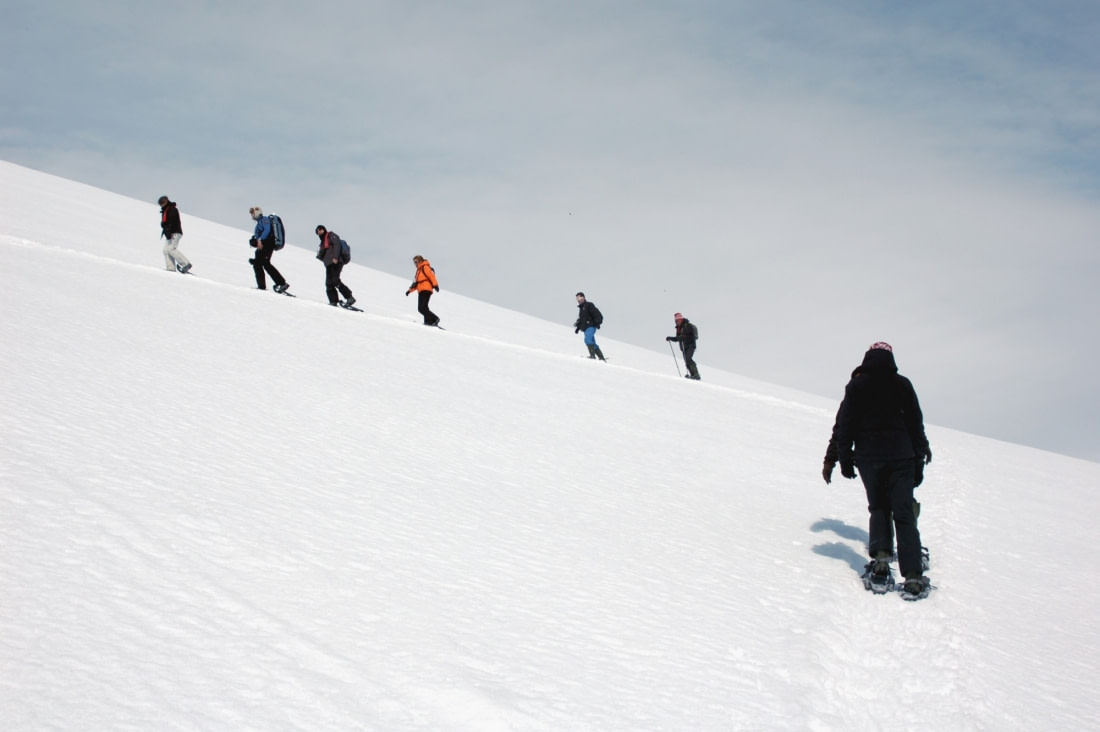
Do I Need to Bring Snowshoes?
No, we provide MSR lightweight snowshoes that easily attach to rubber boots or sturdy hiking boots. On our ships—Plancius, Ortelius, or Hondius—we also provide rubber boots at no extra cost.
However, you should bring suitable clothing for the changeable Polar weather. Layers are essential, as you'll get hot moving around the tundra and will want to remove layers without losing much elemental protection. We suggest bringing:
- Hiking/walking poles
- Rubber boots with good grip (provided on Plancius, Ortelius, and Hondius)
- A waterproof bag, especially for cameras
- Straps for tying snowshoes onto your back or backpack
- Ankle-high sturdy hiking boots for the treks and snowshoeing
- Sunblock
- Gaiters to keep your lower legs dry
- Sunglasses
- A backpack (25 liters is a good size)
- Thin under-socks and thick over-socks (with dry spares)
- A 1-liter water bottle
- Thermal under-gloves and warm outer gloves or mittens (with a spare set)
- A turtle-neck or neck gaiter
- A urine-collection bottle (Antarctic regulations forbid leaving human waste)
- Thermal underwear
- A fleece jacket or vest
- A down jacket or spare fleece jacket
- A breathable (e.g., Gore-Tex) jacket and trousers
- Trekking trousers
- A warm fleece hat
- Binoculars and a Thermos bottle (optional)
Avoid regular cotton clothing like t-shirts or jeans, as they stay wet if they get wet, which is not ideal in a cold environment.

Are Hiking and Snowshoe Activities Extra Cost?
No, these activities are included in the cost of your cruise.
Are the Hikes Safe?
Generally, the hikes are as safe as other hikes involving rugged terrain and hills. However, you'll be facing the cold of the Polar Regions.
Each hike group is accompanied by a specialist guide. In the Arctic, especially around Svalbard, your guide will carry a rifle due to the possible threat of polar bears.
All walks are in areas outside of glaciated terrain. Treks inside glaciated areas, which involve crevasses, are considered mountaineering and are always accompanied by at least one UIAGM-certified mountain guide.
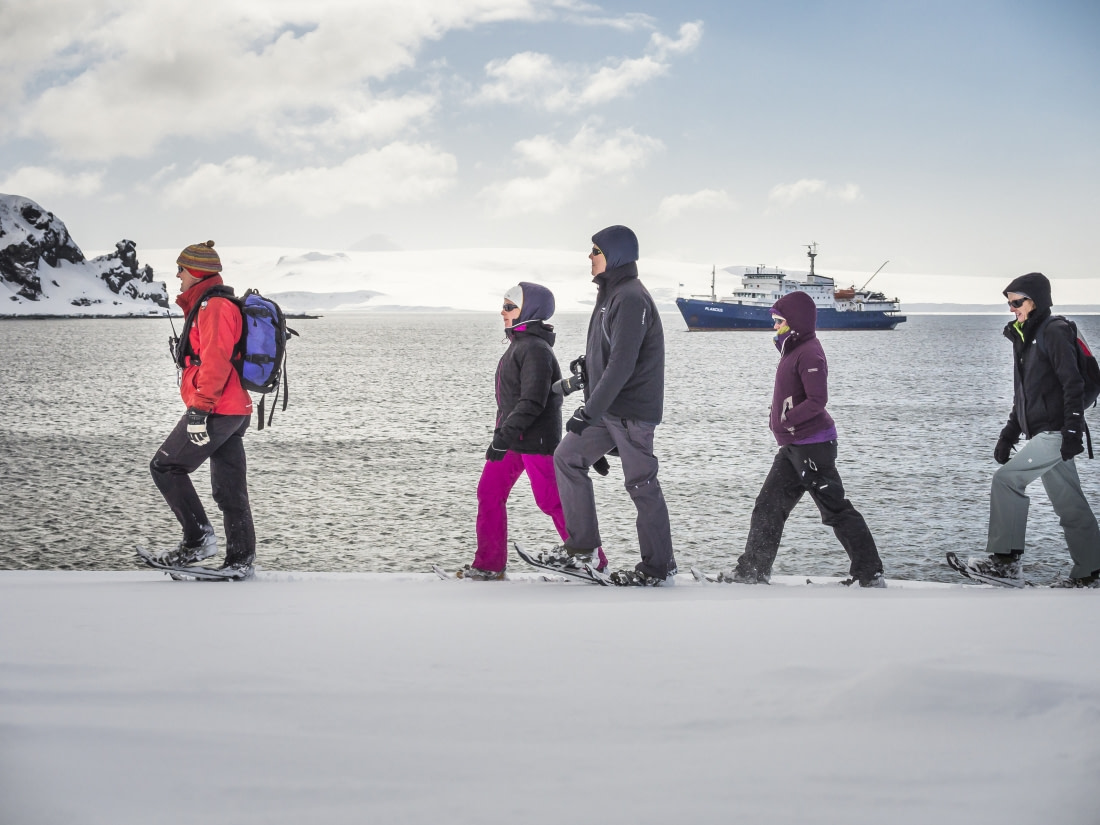
Hiking in the Antarctic
In the Antarctic, hiking options are more limited due to the terrain. However, there are plenty of hiking opportunities on nearby islands in the Weddell Sea, on the South Shetland Islands, and on South Georgia Island. On South Georgia, you can trace the final section of explorer Shackleton’s famous walk.




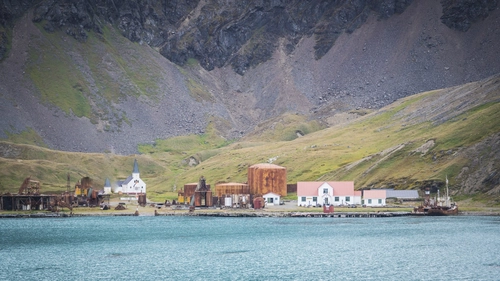

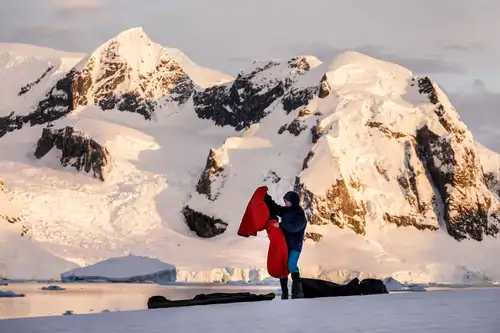
Camping in Antarctica: a True Expedition Experience
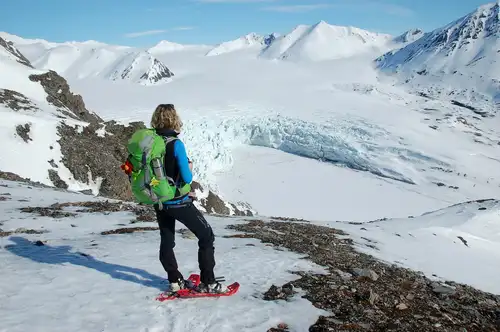
Arctic on Foot: Hiking and Snowshoeing the Far North

Eight Ultimate Antarctica Adventures

Port Lockroy: History, Post Office, and Resident Penguins
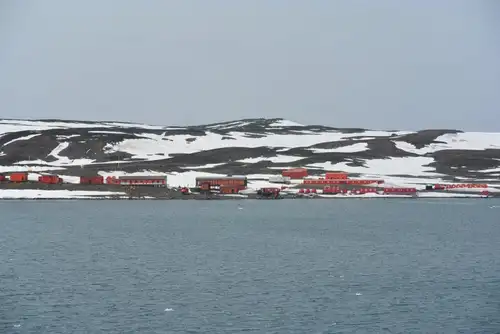
Living the Antarctic Dream

Life in a Penguin Colony
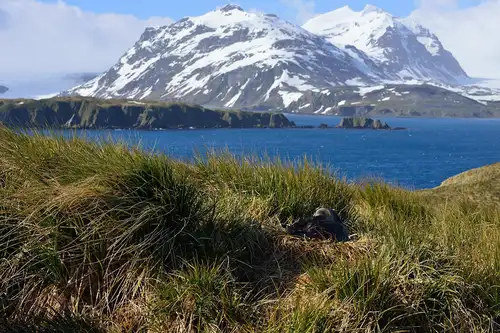
Flowers in Antarctica
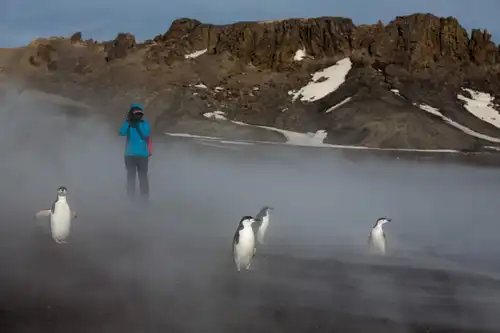
Graham Land: A landscape dominated by volcanoes
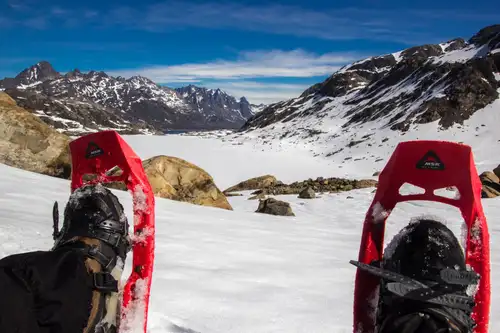
Five Reasons Why Snowshoeing is a Perfect Polar Activity

The Giant Petrels of King George Island
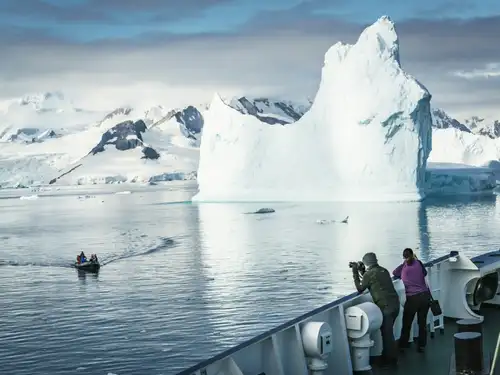
The Classic Polar Cruise: Antarctic Peninsula Facts, Pics, and More
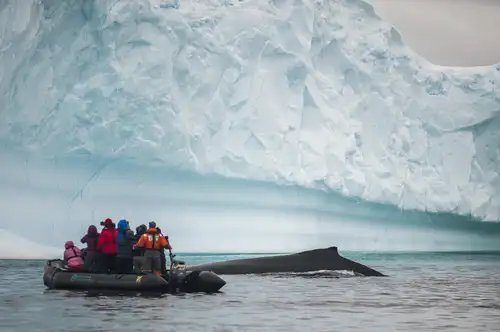
A Day of Whale Watching in Antarctica
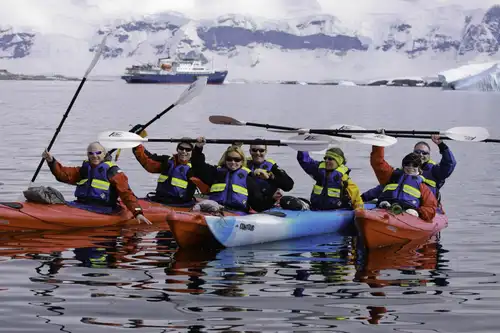
A Day of Basecamp in Antarctica – Paradise Harbour
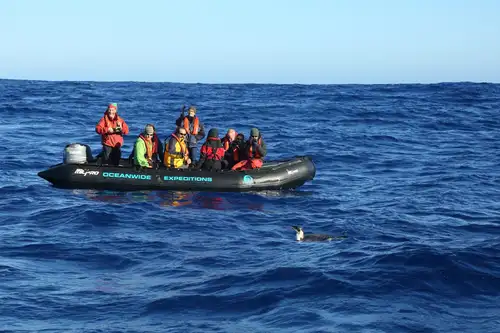
The Emperor Penguin of the Drake Passage
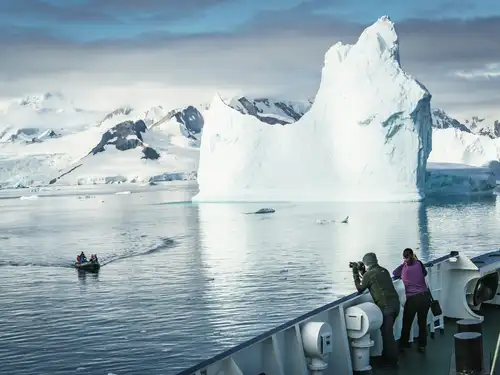



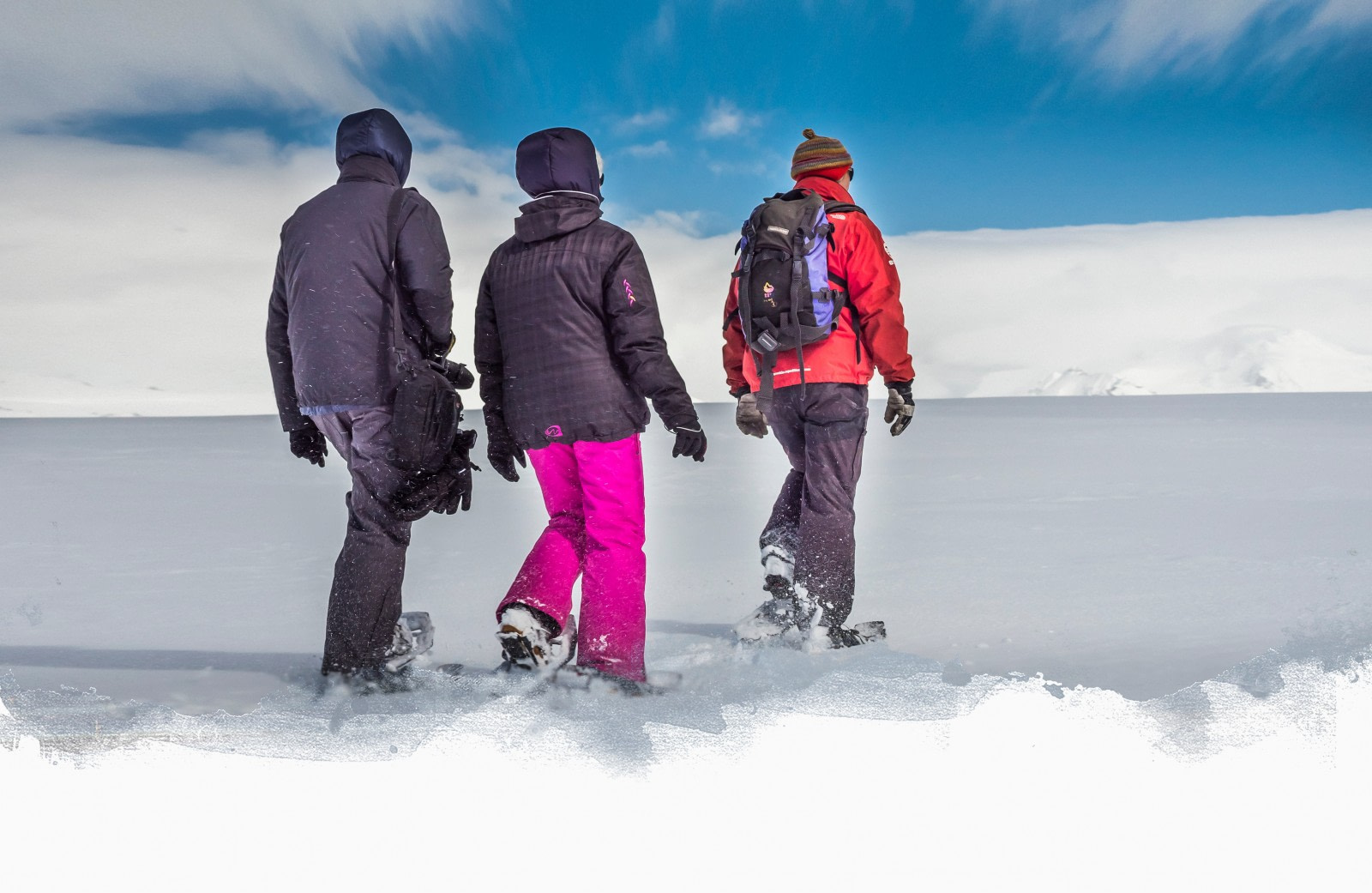

 11 Days / 10 Nights
11 Days / 10 Nights





